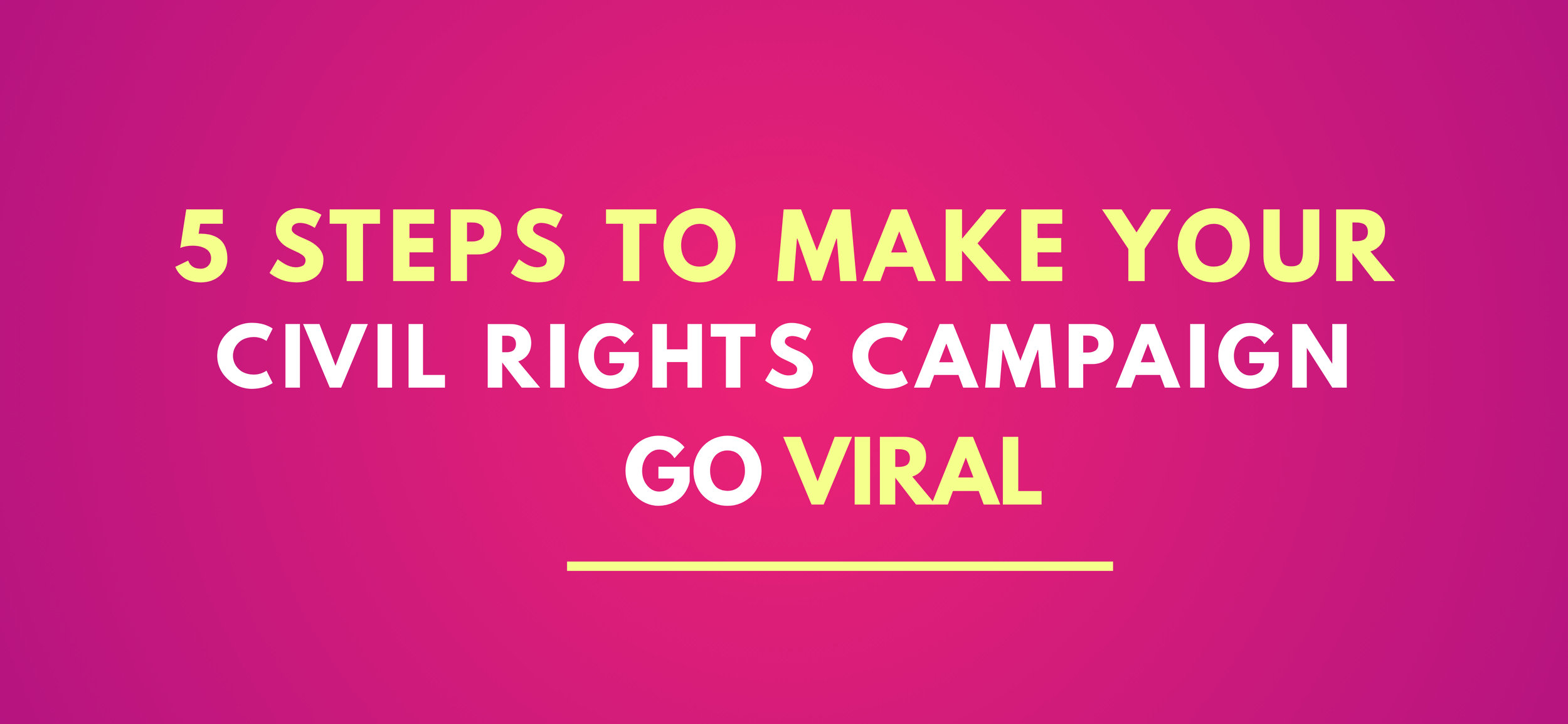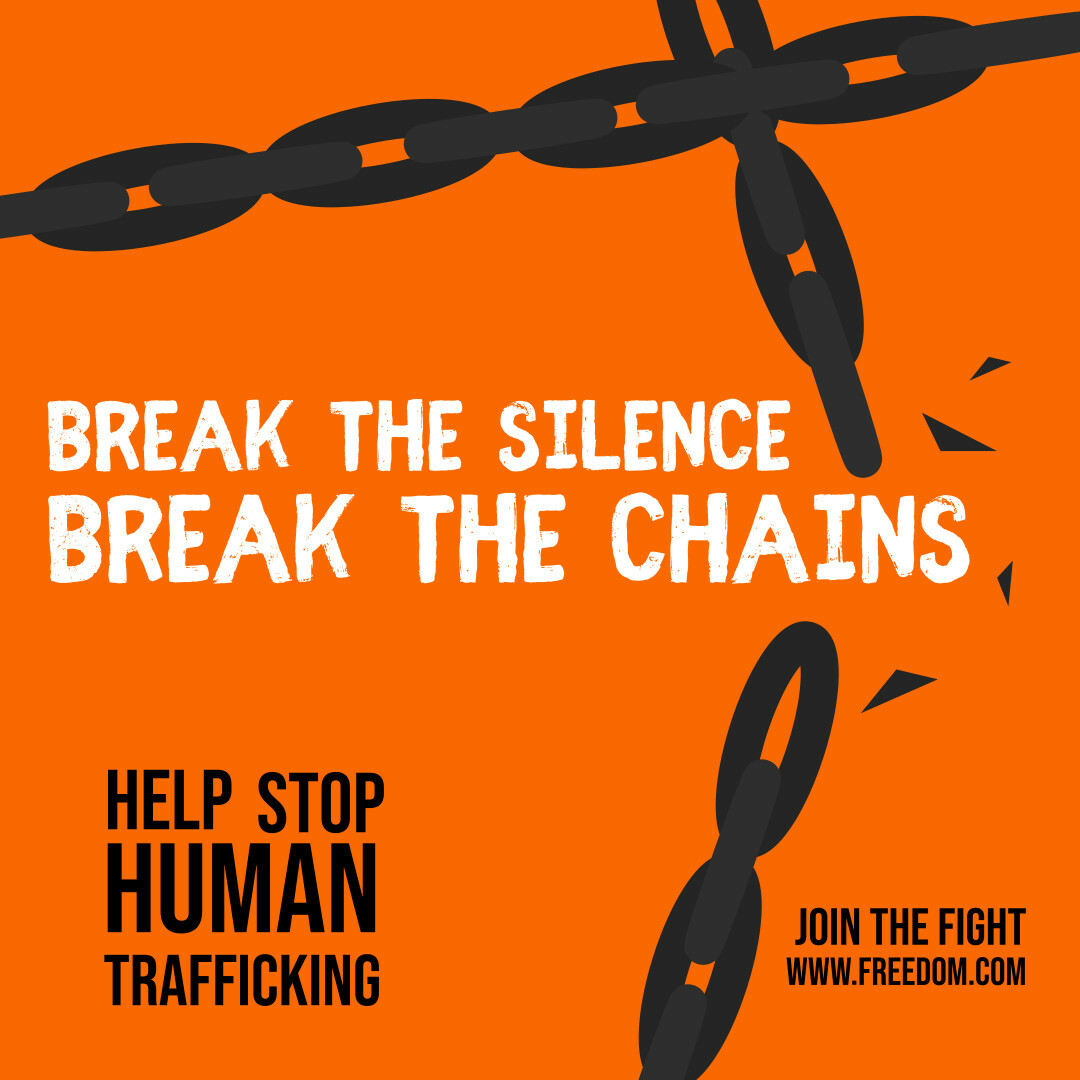5 Steps to Make Your Civil Rights Campaign Go Viral
You’re passionate about civil rights and without being cliché, genuinely desire to make a difference in the world. You’ve seen how social activism campaigns can go viral, raising awareness, garnering attention and resulting in determined action, like Black Lives Matter and the ALS Ice Bucket Challenge.
“Viral” can be defined in any number of ways depending on the platform, but what makes a campaign so influential is that it comes from people in the midst of whatever important event is taking place.
Take the viral #WomensMarch campaign which was triggered in November 2016 when Donald Trump won the United States presidential election, despite an audiotape surfacing in which he crudely described how he treated women. It only took one woman posting a call for a pro-women march on facebook to spark a massive following. Within one day thousands signed up to march for women’s rights. Organizers leveraged other social media platforms to spread the word and #WomensMarch took viral to a whole new level. The day after the presidential inauguration hundreds of thousands of people around the world marched for women’s rights.
What makes a campaign, and specifically a civil rights campaign go viral? There’s no magic formula, but the steps below can help propel your civil rights campaign toward a viral phenomenon.
1. Define your #goal
Civil rights campaigns begin from a deep, committed belief that a specific social justice demands specific social change. Chances are that your civil rights perspective is already shared by others, but you’re the first (or the newest) to take a stand, launch a campaign and spark a change.
Ask yourself these questions:
What is the change you seek?
How will you use the awareness you raise to accomplish that change?
In doing so, do you also want to raise money, influence legislation or something else?
Defining a specific goal for your campaign, such as a march for women’s rights, will guide your steps in getting the word out. Start communicating your goal by creating a phrase intimately linked to your campaign and then preface it with the almighty #hashtag. #BringBackOurGirls and #BlackLivesMatter are campaigns that leave no question about the ultimate goal, but are compelling enough to spark intrigue. Bring back what girls from where? What can we do to make black lives matter?
Having a hashtagged phrase captures attention, even on social media platforms other than Twitter. Be consistent by making sure your hashtag accompanies all printed and visual material. More on that later…
2. Make a clear call to action
Whether you make a call to action obvious in your hashtag, like #BeAnOrganDonor, or something more broad, like #HeForShe, which gives men a variety of ways to support women, make sure that you’ve translated your goal into a clear and concrete action that like-minded people will want to act on.
It is well known in the promotional world that action is driven by emotion. Your clear call must clearly resonate on an emotional level with your audience.
3. Start with a story to strike an emotional note
We are exposed to stories every day, from TV shows, books, songs, news, even advertisements, which in some way evoke an emotion in us. Emotion drives action and civil rights campaigns are inherently emotional.
Most likely you have a story about why you’re passionate about your civil rights issue. Use your story and those of others to evoke similar emotions in your audience that will inspire them to be similarly convicted.
Hélène Campbell started the #BeAnOrganDonor campaign by posting on her website about her journey to receive a life-saving double lung transplant. Her story encouraged others to share her story and their own across social media platforms. The call to action was clear, register to be an organ donor, and within the first week of launching, organ donor registrations soared more than 250%!
Stories told with a clear call to action can persuade people to answer the call. Creatively engaging your audience to act will help take your campaign viral.
4 Creatively engage participation
If it is virality you seek, engage your audience in a way that inspires your participants to engage others.
Take the ASL #IceBucketChallenge, where within 24 hours of receiving an invitation a participant had to film themselves pouring a bucket of ice water over their head, post it so social media and invite someone else to do the same. Despite an ice bucket shower having absolutely nothing to do with ALS as a disease, 17 million people videotaped themselves pouring water over their head and $115 million was raised for ALS research.
Brainstorm creative ways to engage your audience by incorporating some of the unique elements that made the ALS challenge go viral. The Ice Bucket challenge was:
1) Simple - anyone could do it
2) Involved a manageable amount of risk (ice water is cold, but it’s temporary!)
3) Initiated by personal invitation (if my friends can do it, then so can I….)
4) Gave a specific timeframe for completion (24 hours only!)
5) Pure fun to watch!
Finally, the ice bucket challenge kept its audience engaged by offering an alternative action for those unwilling to dump ice water on their head. Participants could instead make a donation to the ALS Association within that same 24-hour period. Many people were inspired to do both.
5 Sustain the momentum
Having your civil rights campaign go viral is not the end game. The #IceBucketChallenge started with a story about a person with ALS and gained momentum to reach notables like Bill Gates and Lady Gaga. That’s viral. But when organizers tried to restart the campaign a few years later the effort fell flat.
The key to sustaining momentum is to plan for it before launching your campaign. Social media is lightening fast and you must be ready to respond with new content just as quickly. Be prepared for the pace by creating graphics and visual images to share your stories and call people to action. Social media posts are 10 times more likely to receive audience engagement when an image is included.
With time and money most likely in short supply, do-it-yourself graphic design websites like PosterMyWall provide tools and templates to design customized materials that capture the essence of your civil rights campaign. Create civil rights posters, flyers, videos and social media graphics that center around your cause. Personalize these professionally designed templates for your civil rights campaign, share your designs online, get print outs and distribute them in your local vicinity.
Surveys, white papers and other data sources can be turned into visually descriptive info-graphics to further support your call for action. Be prepared to build momentum from social media posts, blogs, and email blasts, to posters and flyers.
Extra Tip: Post, blog or blast when your target audience is most likely checking their phone or computer. If your audience is not clearly defined launch in the morning when you know people will be checking their phone or computers over a cup of coffee, commuting to work or school, or looking for motivation to get out of bed.
Visual goes viral
A recent campaign that went viral entirely online was #DressLikeAWoman. The campaign was in spontaneous reaction to President Trump’s declaration that he wanted the women working in the white house to “dress like women.” His statement hit an emotional nerve by suggesting that to be successful in the white house, women should dress to satisfy a traditional stereotype of women’s dress.
When people began posting pictures of women in a variety of “work,” clothes, the Wild Feminist clothing brand jumped on the bandwagon and started the #DressLikeAWoman campaign on Instagram. Poof! Virality.
Instagram lit up with pictures showing women dressed as first responders, military, astronauts and athletes, even Ruth Bader Ginsberg in her supreme court robes and an M.D. performing an autopsy while wearing a string of pearls. Pictures were posted and shared across time zones, cultures and socio-economic status with the #DressLikeAWoman hashtag.
The goal was clear, to make it known that women work in a variety of fields that require different ways of dressing. The call to action was equally clear, which was to post pictures of women in their distinctive and impressive work attire. It was striking a nerve and the ensuing emotional response that inspired women and men to act and change the perception of what it means to #DressLikeAWoman.
Most civil rights campaigns start small and with a story. Like the story of Rosa Parks refusing to give up her seat in the designated “colored” section of the bus to a white, male passenger. You may be starting small, you may only have one story. But there are resources available that regardless of your size or campaign can help you make a big impact. Websites like PosterMyWall enable you to quickly, easily and affordably launch your civil rights campaign and make a difference, virally.










